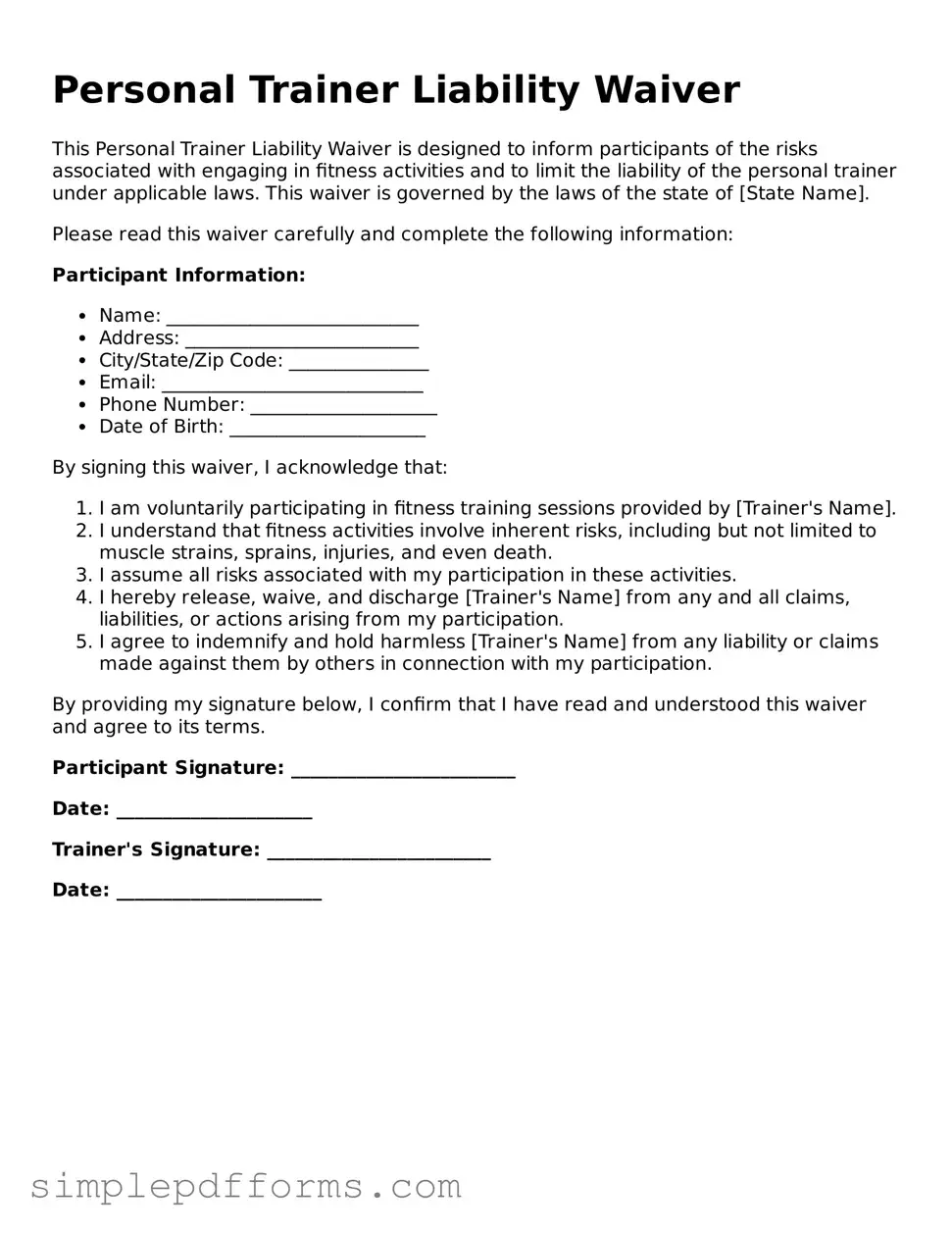Personal Trainer Liability Waiver
This Personal Trainer Liability Waiver is designed to inform participants of the risks associated with engaging in fitness activities and to limit the liability of the personal trainer under applicable laws. This waiver is governed by the laws of the state of [State Name].
Please read this waiver carefully and complete the following information:
Participant Information:
- Name: ___________________________
- Address: _________________________
- City/State/Zip Code: _______________
- Email: ____________________________
- Phone Number: ____________________
- Date of Birth: _____________________
By signing this waiver, I acknowledge that:
- I am voluntarily participating in fitness training sessions provided by [Trainer's Name].
- I understand that fitness activities involve inherent risks, including but not limited to muscle strains, sprains, injuries, and even death.
- I assume all risks associated with my participation in these activities.
- I hereby release, waive, and discharge [Trainer's Name] from any and all claims, liabilities, or actions arising from my participation.
- I agree to indemnify and hold harmless [Trainer's Name] from any liability or claims made against them by others in connection with my participation.
By providing my signature below, I confirm that I have read and understood this waiver and agree to its terms.
Participant Signature: ________________________
Date: _____________________
Trainer's Signature: ________________________
Date: ______________________
